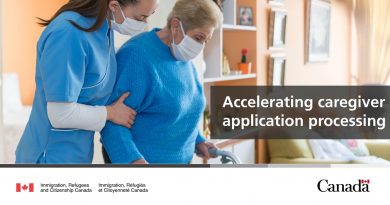Public Policy: Permanent Residence Pathways for Hong Kong Residents
To prove this, you can provide one or more of the following:
- a statutory declaration explaining where you plan to live and why
- documents showing any ties you have to the province or territory (outside Quebec) where you plan to live, including
- proof of employment
- job offers
- job applications you’ve submitted
- job interviews you have scheduled
- proof you have family living in the area
- lease agreements or mortgages
Post-secondary education (stream A only)
We made changes to the eligibility requirements for stream B (Canadian work experience)
As of August 15, 2023, if you apply for stream B (Canadian work experience), you no longer need post-secondary education to be eligible. Read the full announcement.
You must provide
- a copy of your diploma or degree
- your final transcripts
They must show that you graduated
- from a designated learning institution in Canada
- in the last 3 years
If you have a diploma or certificate from a graduate or post-graduate program, you must also include both of the following:
- proof that this program required you to have a post-secondary diploma or degree as a prerequisite, such as a
- copy of the school’s website showing all the prerequisites
- letter from the school that lists the prerequisites you needed
- a copy of your post-secondary diploma or degree and final transcripts showing that you graduated no more than 5 years before the start of your graduate or post-graduate program
Canadian work experience (stream B only)
You must provide proof for each job you list in your application. This could be
- a letter from your employer, on company letterhead, that includes
- your name
- your job title
- the dates you worked for the company
- the number of hours you worked each week
- your annual salary and any benefits you received
- the company contact information (address, phone number and email address)
- your supervisor’s name, title and signature (or those of the company’s human resources officer)
- a copy of the T4 tax information slips and notices of assessment the Canada Revenue Agency issued to you
- copies of your records of employment
- pay stubs
- copies of bank deposits showing salary payments
To be eligible for permanent residence under this public policy, you must apply from within Canada.
Application Forms and Submission:
Step 1: Get ready to apply online
You must now apply online
As of January 9, 2023, you need to apply online.
If you can’t apply online and need accommodations, including for a disability, you can ask for the application in another format (paper, braille or large print).
Sign in or create a Permanent residence online application portal account (opens in a new tab).
Refer to the Instruction Guide [IMM 5067] for important information about your eligibility, fees and how to apply.
Step 2: Fill out your forms
You must fill out these digital forms online
You’ll fill out these digital forms online (for yourself, and any family members 18 or older)
- Generic Application Form for Canada [IMM 0008]
- Schedule A – Background/Declaration [IMM 5669]
- Additional Family Information [IMM 5406]
- Supplementary Information – Your Travels [IMM 5562]
You must also fill out these PDF forms
- you don’t need to sign them
- upload them to your online application
- as the principal applicant, you’ll electronically sign for the entire application, including those of your family members
- Document checklist [IMM 0134] (PDF, 0.9 MB)
- Use this checklist to make sure you include all the forms and documents you need.
- Document checklist [IMM 0134] (PDF, 0.9 MB)
If you’re applying under stream A (In-Canada graduates)
If you’re applying under stream B (Canadian work experience)
Using an immigration representative
If you’re a representative, find out how you can create an account and submit applications on behalf of your clients.
If you want to appoint someone to do business with us on your behalf, you must
- submit a Use of a Representative [IMM 5476] (PDF, 648.31 KB) form
- sign it digitally or by hand and get your immigration representative to do so also
- upload it with your application
An immigration representative (an immigration consultant or lawyer) can give you advice and help you with your application for a fee. But they can’t
- open a portal account on your behalf
- electronically sign the application for you
- sign into the portal using your username and password
A representative can fill out forms and communicate with us on your behalf through their own account. They can also
- help you prepare the documents you need to upload
- answer questions about the forms
After you read the declaration, you must be the one who types your name. This is the legal requirement for your application to be considered “signed,” according to Canada’s immigration law.





